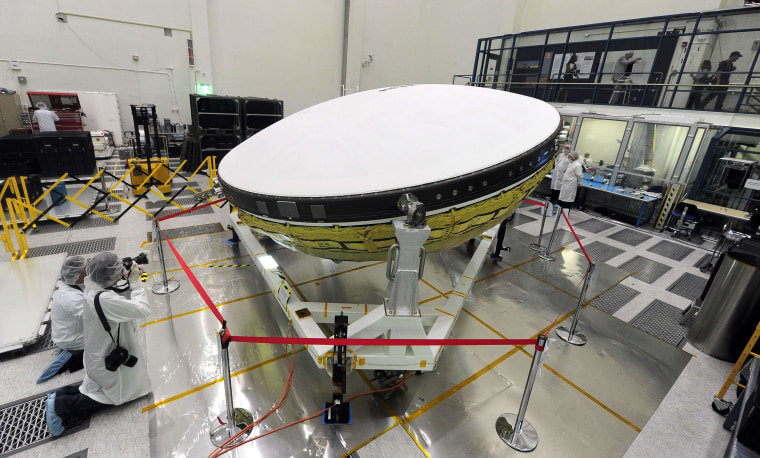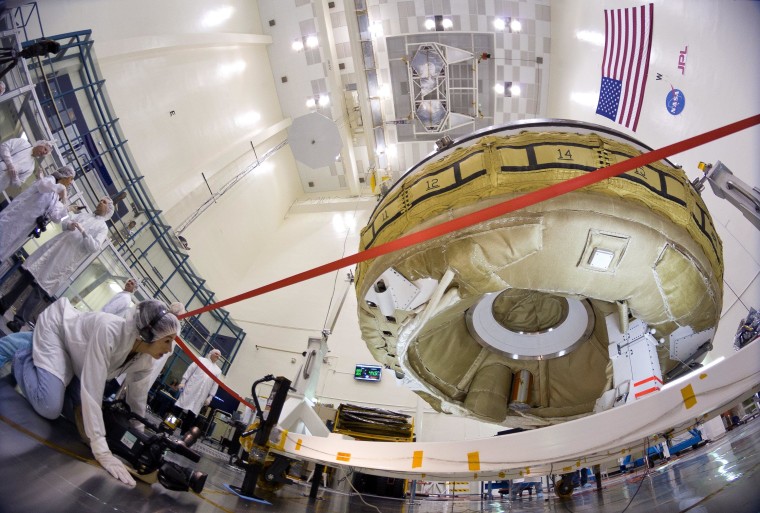Eat your heart out, Marvin the Martian: NASA is building its own flying saucer as part of a project to get bigger payloads to Mars. The disk-shaped object is called a Low Density Supersonic Decelerator, and it's due to fly for the first time this June.
Journalists got an advance peek at the saucer this week at NASA's Jet Propulsion Laboratory in Pasadena, Calif., where it's being readied for the test flight. The saucer will be taken to Hawaii and then lofted up to an altitude of 120,000 feet (37 kilometers) on a high-altitude balloon. It'll fire a rocket engine to rise even higher, to 180,000 feet (55 kilometers). And then it'll start falling.
During its Mach 3.5 descent, it will inflate like a pufferfish to increase atmospheric drag, slowing its speed to about twice the speed of sound. That will trigger the deployment of a super-strong 100-foot-wide (33.5-meter-wide) parachute, which should slow down the test vehicle enough for a gentle splashdown.
Why go to all that trouble? NASA had to use a complex, rocket-powered sky crane to get its 1-ton Curiosity rover safely down to the surface of Mars in 2012, but the payloads required for human missions to Mars are expected to weigh significantly more — as much as 100 tons. The sky-crane system can't handle payloads that heavy. That's why NASA says it'll need the supersonic decelerator to send astronauts to Mars.
Let's just hope those astronauts don't face the Q-36 explosive space modulator when they get there.


